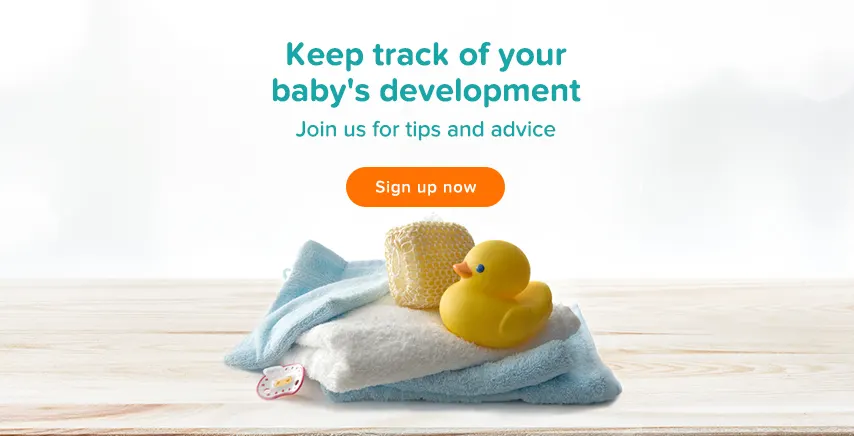Newborn umbilical cord care
Here you'll find instructions on caring for your baby's umbilical stump – how to help it heal, dry up and fall off safely. You'll also learn to identify the signs of infection, and find out when to call your healthcare provider.
Helpful tips to care for the umbilical cord
Follow these helpful guidelines to help protect your baby's cord stump.
Whenever you change your baby's diaper, pay special attention to the area at the base of the cord, nearest to the belly button. Wipe it gently but thoroughly to clean out any moist debris that may have collected. A cotton-tipped applicator works well for this. Don't worry about hurting your baby – there are no nerve endings in the cord stump.
Try to allow air to reach the cord stump. This will help it heal and dry faster.
Try to prevent diapers from rubbing against the stump. You can fold the diaper down under the cord stump, or you can use diapers with a cut-out notch at the top.
Let the cord stump fall off on its own. In the past, cleaning the stump with rubbing alcohol was often suggested. New data suggest that natural drying will allow the cord to fall off faster.
Babies are born with 'innies' or 'outies'. Some parents try to cover the umbilical area with coins, bandages or wraps to change what your baby was born with – this won't work and may irritate the area more.
While your newborn still has their umbilical cord, it's best to give a quick top and tail bath rather than submerging the cord stump. Once the cord has fallen off, feel free to bathe your little one in a baby tub or sink.
Identifying warning signs
If the cord oozes yellow pus, develops a bad odour or the area around the base is red and swollen, it may be infected. It would be advised to notify your baby's healthcare provider.
Redness can also be caused by the dry cord stump irritating the nearby skin. To determine what is causing the irritation, gently push the stump away from the red area and mark the margin of redness with a pen. Wait 30 to 60 minutes and check it again. If the redness is still there, and especially if it has spread beyond your mark, you should inform your healthcare provider promptly. If the redness is just irritation from the stump, it will take care of itself in a little while.
Occasionally, you may see small amounts of bleeding from the navel. This is normal as the blood vessels separate. If you notice bleeding, first try applying a little pressure. If the bleeding doesn't stop after five to seven minutes of constant pressure, call your healthcare provider.
After the cord falls off, you may notice a reddish moist lump or nodule near where the cord fell off that may get slightly larger and continue to ooze slightly. This is called an umbilical granuloma. Your healthcare provider may treat it with a drying medication called silver nitrate.
Follow the tips above carefully and your baby's umbilical cord will dry out and fall off within a few weeks.

